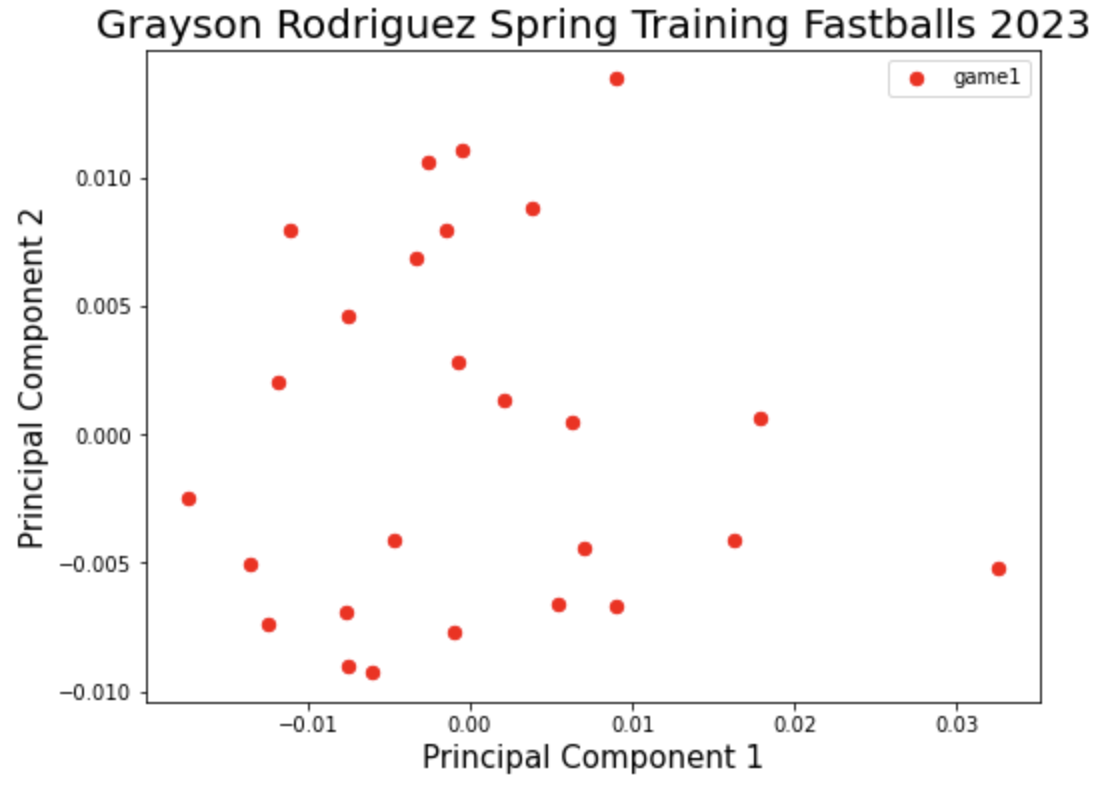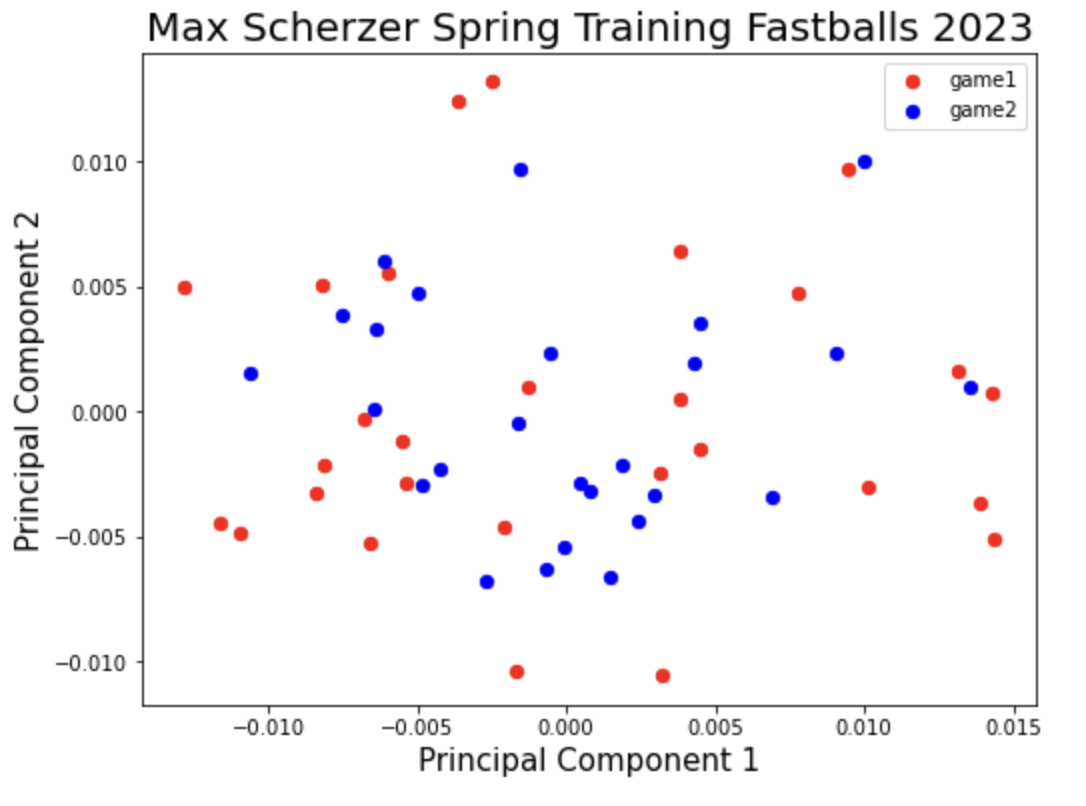The terminals at Baltimore-Washington International, BWI, were packed with Orioles fans excited to escape the last grip of Maryland’s cold winter weather, heading to Florida for live baseball once again. The unusual sight of sandals and sun hats standing in lines to get on planes can be off-putting, yet invigorating. Spring Training brings that little bit of hope to baseball fans that summer will actually come again, hard as it may be to believe.
“Are you going to the game tomorrow?”, asked a short older woman as I climbed over her to get to what seemed like the last seat on the plane.
“Yea, I’m going Saturday and Sunday.” This statement was greeted with a quick sideways look followed by a “good for you” sort of expression.
“We’re only going tomorrow. I’m so excited! I can’t wait to see that Jackson Holliday!”
My nice neighbor would have to join me at the game on Sunday if she wanted to see Baltimore’s golden boy, as he was given the day off on Saturday against the Yankees.
Cole Irvin would take the bump for the O’s and Marcus Stroman for the Yankees at Ed Smith Stadium on Saturday, March 2nd. Irvin was coming off an impressive first start where he threw two innings and faced only six batters. It was reported that his velocity was up:
It was a good sign from the lefty who is fighting for a roster spot, though a setback to John Means‘ recovery from Tommy John surgery and a possibly detrimental injury to Kyle Bradish’s elbow has given Irvin a better chance. The pop of the catcher’s mitt from the bullpen as Irvin warmed up seemed to have a little something extra this spring. Then again, it could have been the months without the sound that made it extra crisp.
The first pitch Irvin threw was to Yankee shortstop Anthony Volpe and he swung away, lining a sharp single into right-center field. The Yankees are hoping Volpe will be able to get on base more often in 2024 as he struggled to do so with a .209/.283/.383 line in his rookie season. It seems that the reported tweaks he’s made to his swing are already showing some improvement.
As he stood on first base, the more attuned fans in attendance wondered out loud if Volpe, who stole 24 bases in 2023, would pick up where he left off and take second. He danced and shuffled off first base enough to make Irvin consider a throw over. Perhaps the goading worked to Volpe’s advantage and, to some extent, Alex Verdugo’s, as Irvin missed inside and hit Verdugo placing runners on first and second. Irvin was able to get out of the inning without a run-scoring. He finished the game having thrown three innings, giving up three hits, a walk, and no runs. There’s certainly room in the O’s starting rotation and even more so for a left-handed pitcher. But Julio Teheran came in after Irvin and threw one solid inning with a strike-out, so there’s still a competition happening in the O’s camp.
Here are the fringe Orioles starters and their ratio projections:
Orioles Fringe Starter Projections
| Name |
G |
GS |
IP |
K/9 |
BB/9 |
ERA |
K/BB |
HR/9 |
| Tyler Wells |
38 |
11 |
88 |
8.4 |
2.7 |
4.3 |
3.1 |
1.5 |
| Cole Irvin |
34 |
8 |
75 |
6.9 |
2.0 |
4.4 |
3.4 |
1.3 |
| Julio Teheran |
8 |
8 |
43 |
6.5 |
2.6 |
4.9 |
2.5 |
1.6 |
Projected by ATC
It seems most likely that Teheran will make the team as a long-reliever in the bullpen. Otherwise, the O’s pen showed promising signs from Dillon Tate, the 29-year-old righty who missed all of 2023 with an arm injury, and Nick Vespi, the 28-year-old lefty. Both relievers threw one inning, struck out one, and kept the Yankees off the bases. Though he did not come into the game, I could see last year’s breakout reliever Yennier Cano working out on an Orioles backfield. Cano has some fantasy promise in a season where the O’s will be without Félix Bautista (Tommy John) and while Craig Kimbrel is certainly a lock to be the closer, Cano is the next man up. One more notable appearance came from the 27-year-old Wandisson Charles. Back when he was a prospect with the Oakland Athletics, Eric Longenhagen and Kevin Goldstein wrote about Charles:
[S]itting in the 95-98 range with his fastball. He still lacks consistent feel for location and a good secondary pitch, but his sheer arm strength merits inclusion [on this prospect list].
The part about his “physical presence [resembling] that of an NFL edge rusher” certainly rang true, as did the part about his lack of control. Charles threw one inning gave up a hit, walked a batter, and struck out a batter.
On the offensive side of seven Orioles runs came the following notes:
–Kyle Stowers hit a shallow home run to right field in his only at-bat in the game. Stowers is one of the many Orioles who should now be getting consistent major league playing time, yet is blocked by established outfielders. This is a good thing for the Orioles, a bad thing for players who want to play but are blocked, and an even worse thing for fantasy players who want their keepers to accumulate stats. Ok, maybe it’s more frustrating for the actual players. Stowers dealt with an injury early in the season in 2023 but ended the year with a AAA slash line of .245/.364/.511 in 233 plate appearances. The 30 plate appearances he earned at the big league level in 2023 garnered a dismissible .067/.152/.067.
–Coby Mayo went hitless in three at-bats. He is certainly an imposing figure at third base and should be given, at least, a cup of coffee this season. He, like Stowers, has certainly outgrown AA (.307/.424/.603) and moved closer to outgrowing AAA (.267/.393/.512) in 2023.
-Fantasy managers should not sleep on Austin Hays and he let them know with a no-doubt home run to right field. He’s projected to be a mainstay in the Orioles outfield and to hit, by most projection systems, just shy of 20 home runs. The wall in left field will have something to say about Hays’ home run potential in 2024, but with health, he could put together a full season of good production.
Though the O’s fans were out in droves, Ed Smith Stadium was half-filled with New Yorkers interested in what Stroman would offer in the upcoming year. He would face Cedric Mullins, Adley Rutschman, and Ryan Mountcastle in the top of the first and would get each out on a ball in play. Marcus Stroman has an NFBC ADP in the 280s and projects to be a mid-rotation starter for the Yankees. Going into his 10th major league season, his projection has a lot of data to build off of:
Marcus Stroman, 2024 Projection
| Name |
W |
ERA |
GS |
IP |
SO |
K/9 |
BB/9 |
| Marcus Stroman |
10 |
3.99 |
27 |
151 |
128 |
7.6 |
2.9 |
*Projection by ATC
Stroman hit 200 innings pitched twice in his career but hasn’t gotten over 150 in his last two seasons. He threw four innings and gave up only two hits while striking out three. Trent Grisham is only projected for 365 at-bats, but he looked as good as ever playing center field. With his defensive ability and the likelihood of his needing to fill in for injured players, some fantasy managers may be interested in rostering Grisham in deep leagues, yet the ATC projected slash line of .222/.321/.405 may not be too appealing.
After looking at the Yankees box score from the previous day, it was clear that the Yankee big dogs would be on the golf course on Saturday. All of Juan Soto, DJ LeMahieu, Aaron Judge, Anthony Rizzo, and Giancarlo Stanton were in the lineup the day before I arrived. But that provided a good opportunity to see some of the young talent the Yankees have in their system. Players like Caleb Durbin (3B, age 24), Ben Rice (C/1B, age 25), and Brandon Lockridge (OF, age 26) all had productive at-bats. As is likely to happen in Spring Training, the lineups became filled with AAA and AA players, all looking to make an impression on someone. Yankee hitters got on the board with three late runs, but couldn’t catch up to the young O’s and the seven runs they put on the board.
As odd as it is to see players walking out of the dugout and towards the clubhouse in the middle of the game, having gotten their work in for the day, there’s a sense of ease that comes with knowing the slog of the season hasn’t kicked off just yet. Your fantasy team hasn’t begun collecting stats, it may not even have all of its roster spots filled yet. But, checking in on roster situations and young prospect production is something that can give you more of an edge during a draft.




